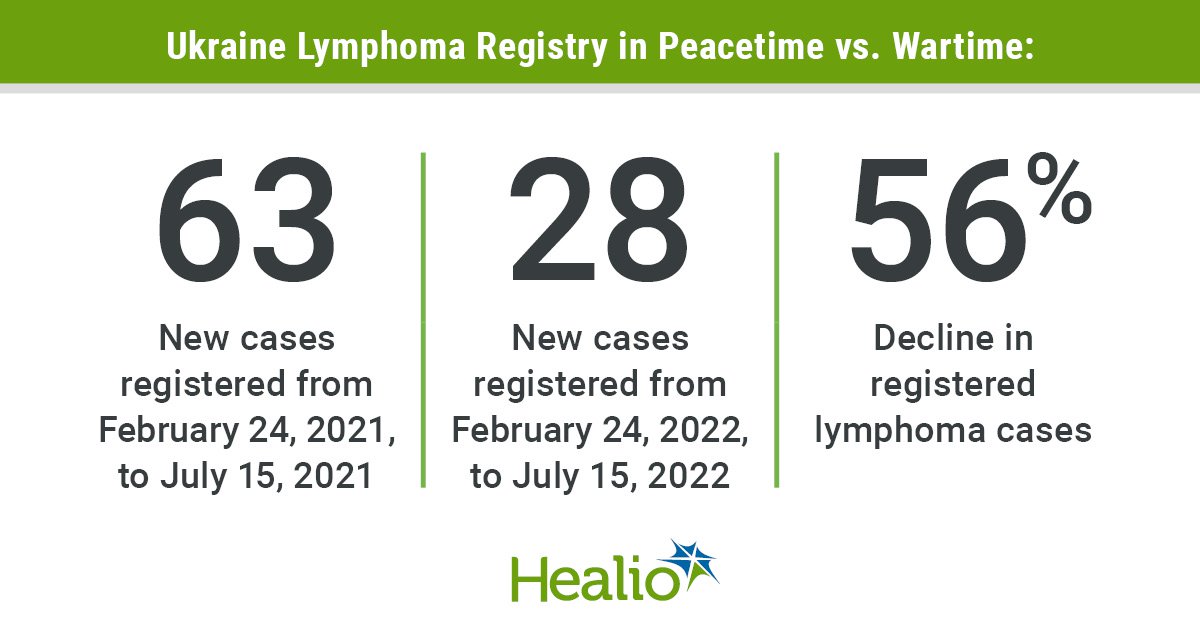Ukrainian Lymphoma Registry reports seeing half as many patients during war
Click Here to Manage Email Alerts
NEW ORLEANS — Since war started in Ukraine, tertiary care centers focused on treating cancers saw a 56% decline in patients with lymphoma, a presenter said.
“On February 24, 2022, a full-scale armed conflict broke out in Ukraine, including Kyiv, leading to the displacement of the population to safer regions,” Yana Stepanishyna, PhD, of the National Cancer Institute, Kyiv, Ukraine, said during her poster presentation. “As a consequence, many lymphoma patients lost the opportunity to be referred to specialized hematologic centers, and to be treated according to the most appropriate up-to-date strategies.”

The Ukrainian Lymphoma Registry launched in 2019 and included seven institutions treating malignant lymphoma when conflict broke out in February 2022.
Between October 2019 and July 2022, 639 patients registered with the Ukrainian Lymphoma Registry. More than 600 (n = 611) registered prior to February 2022, with an average of 22 patients per month.

From Feb. 24 to July 15, 2021, the registry saw 63 new cases registered, while during the same period for 2022 — after the conflict arose — they saw only 28 new cases.
As a break down, between Feb. 24 and April 30, 2022, only two patients registered, with nine patients registering in May, 11 in June, and six between July 1 and July 15, 2022.
“Since the start of the war, a dramatic 56% decrease in the number of newly diagnosed lymphoma patients was admitted to the seven institutions participating in the Ukrainian Lymphoma Registry. Most likely this situation will undoubtedly have a relevant impact on the access to appropriate treatments and ultimately will translate into a reduced chance of cure and long-term survival,” Stepanishyna said. “When the analysts calculate the costs of the war, we should also take into account the number of lives lost not on the battle fields but for denied access to treatments.”

